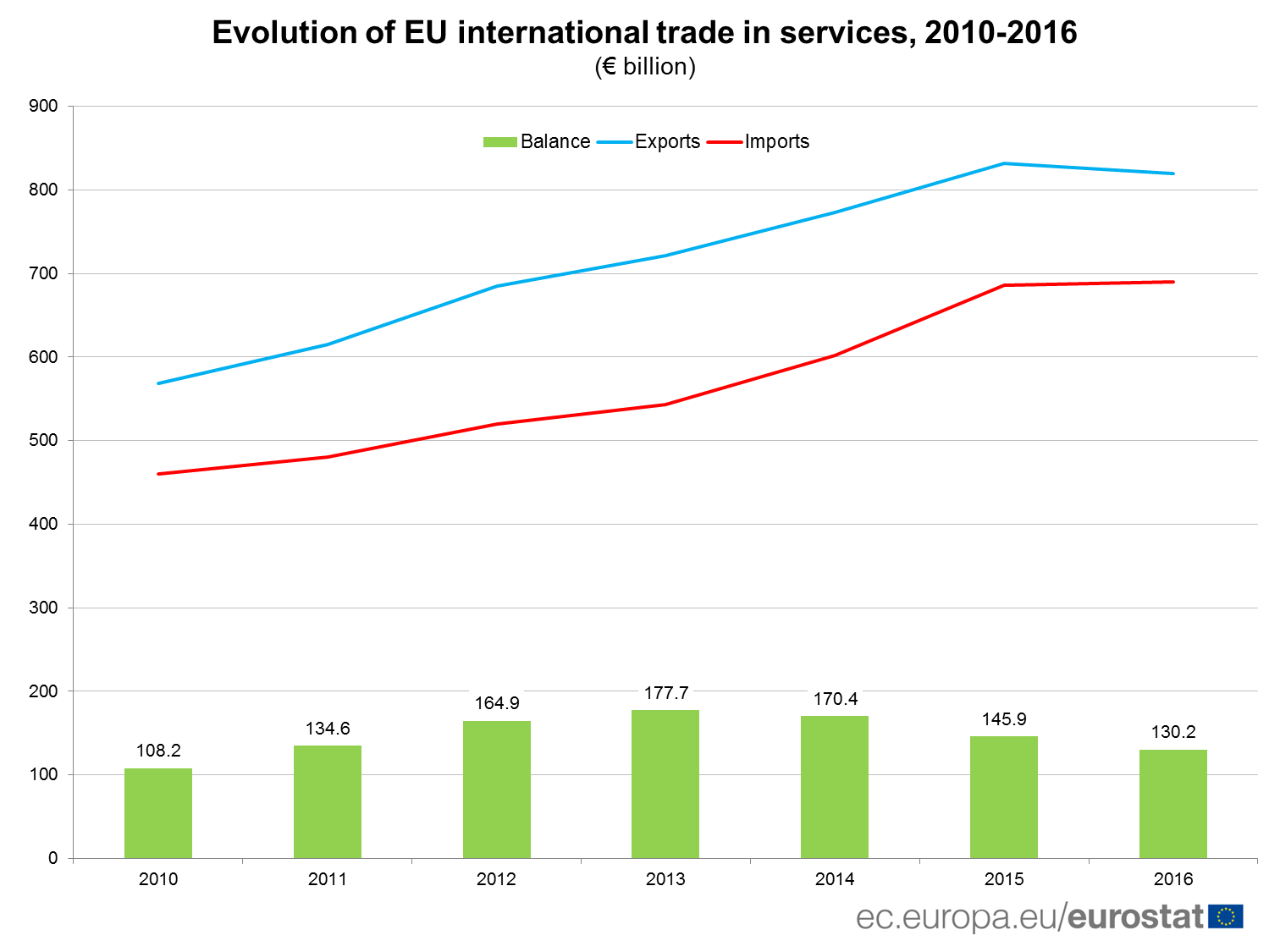According to preliminary data for 2016, the European Union's (EU) exports of services to the rest of the world decreased by 1.4% between 2015 and 2016, from €831.5 billion to €819.8 bn, while imports grew slightly (+0.6%) from €685.7 bn to €689.7 bn. As a consequence, the EU trade surplus in services, which had steadily increased between 2010 and 2013, has decreased for the third consecutive year in 2016 to €130.2 bn.
ICT and financial services boost EU surplus in trade in services
Accounting together for around about a third of total extra-EU exports (30%) and imports (32%), transport and travel remained in 2016 the main categories of services traded by the EU, along with other business services (27% and 32%).
The EU surplus in 2016 was mainly due to surpluses in telecommunications, computer and information services (+€67.3 bn), financial services (+€40.0 bn) and transport and travel (+€29.4 bn), while a significant deficit was recorded in charges for the use of intellectual property (-€47.2 bn).
The United States, top partner for both exports and imports
In 2016, the main partners for EU exports of services remained the United States (€219.0 billion, or 27% of extra-EU exports) and Switzerland (€118.6 bn, 14%), well ahead of China (€38.0 bn, 5%), Japan (€29.4 bn, 4%) and Russia (€23.8 bn, 3%). The main partner for EU imports of services also continued to be the United States (€207.2 bn, 30% of extra-EU imports), followed by Switzerland (€93.9 bn, 14%), China (€27.1 bn, 4%), Japan (€16.3 bn, 2%) and India (€14.7 bn, 2%).
In 2016, the EU recorded surpluses in trade in services with all its main partners, except Hong Kong (-€0.9 bn) and India (-€0.8 bn). By far the largest surplus was observed with Switzerland (+€24.7 billion), ahead of Japan (€13.1 bn), Russia (€12.5 bn), the United States (€11.8 bn) and China (€10.9 bn).



